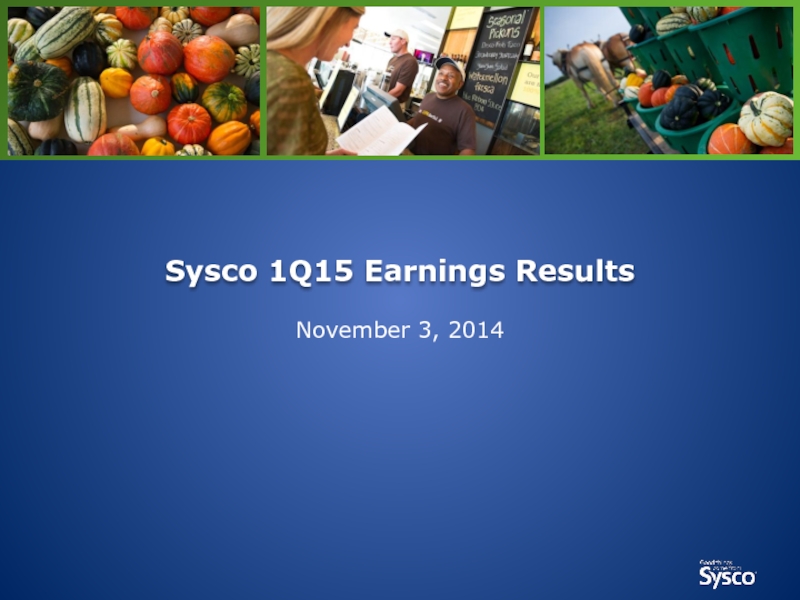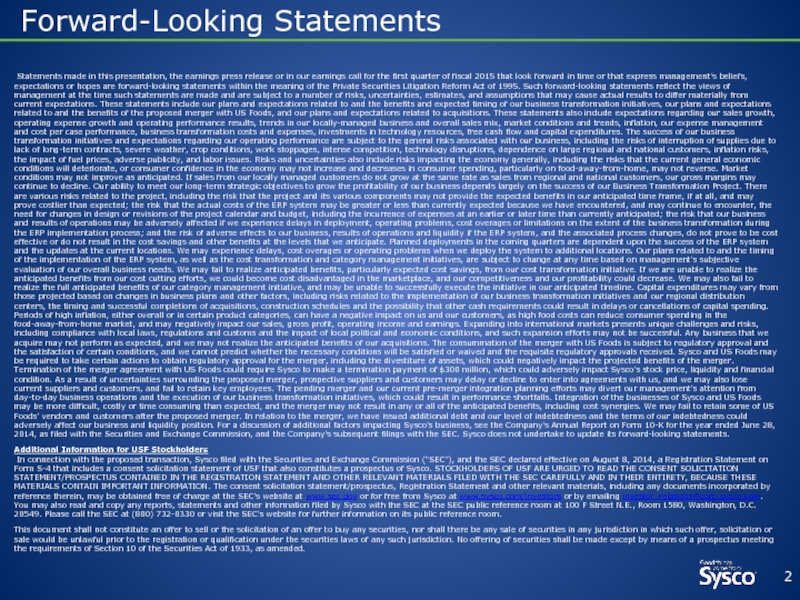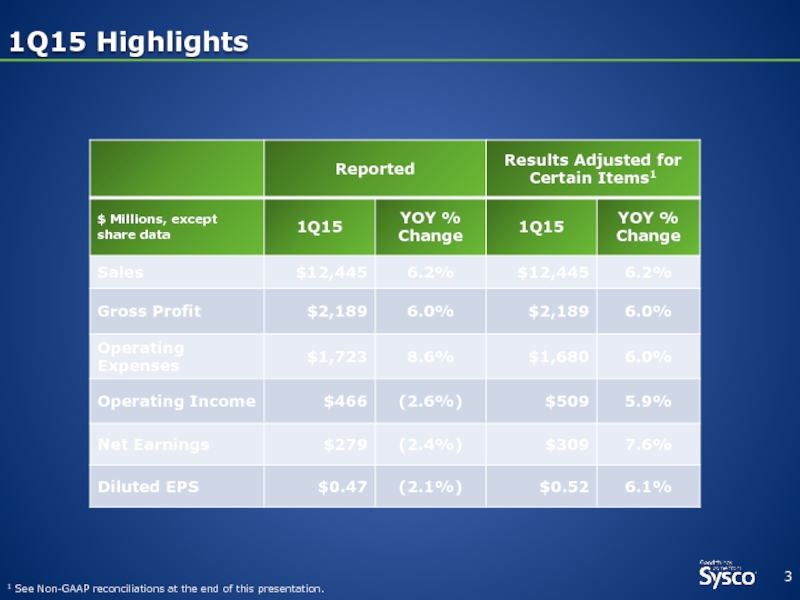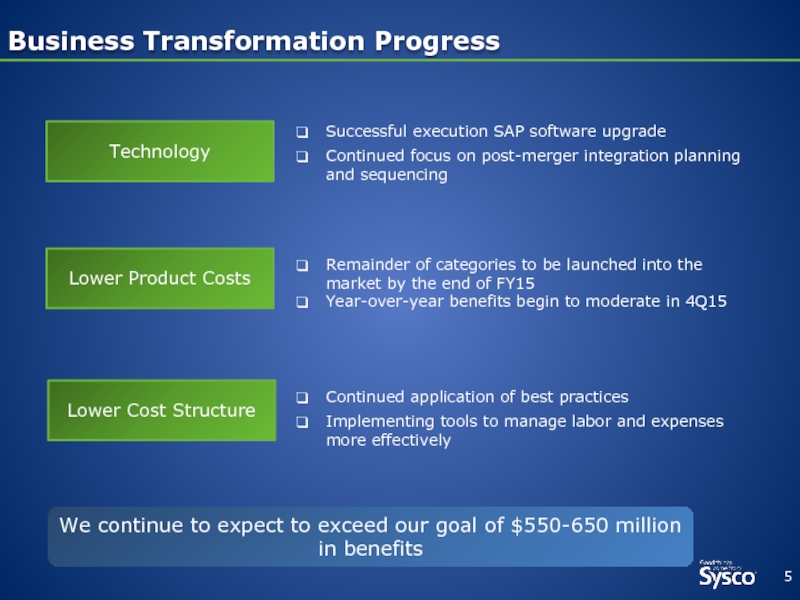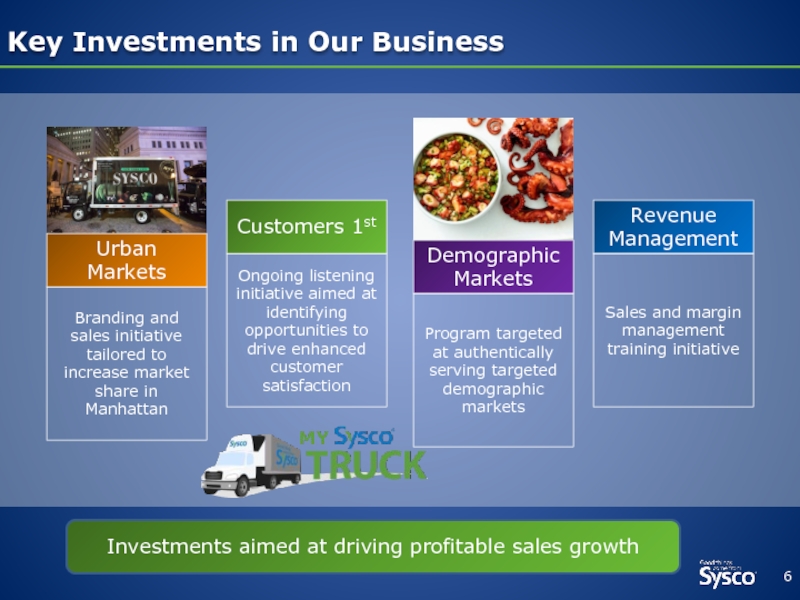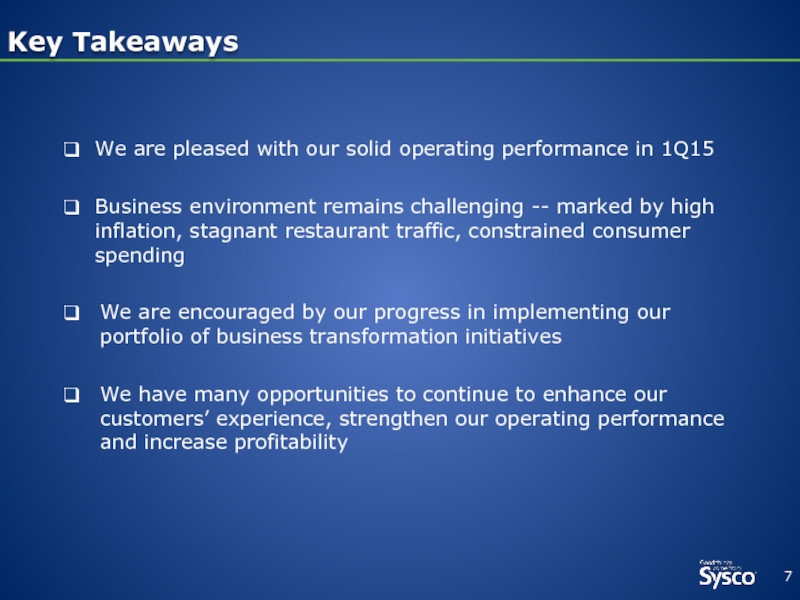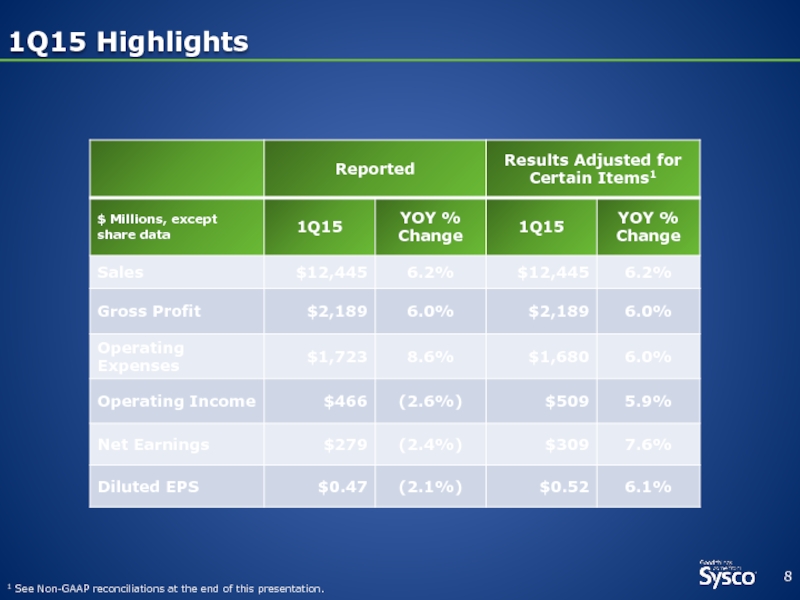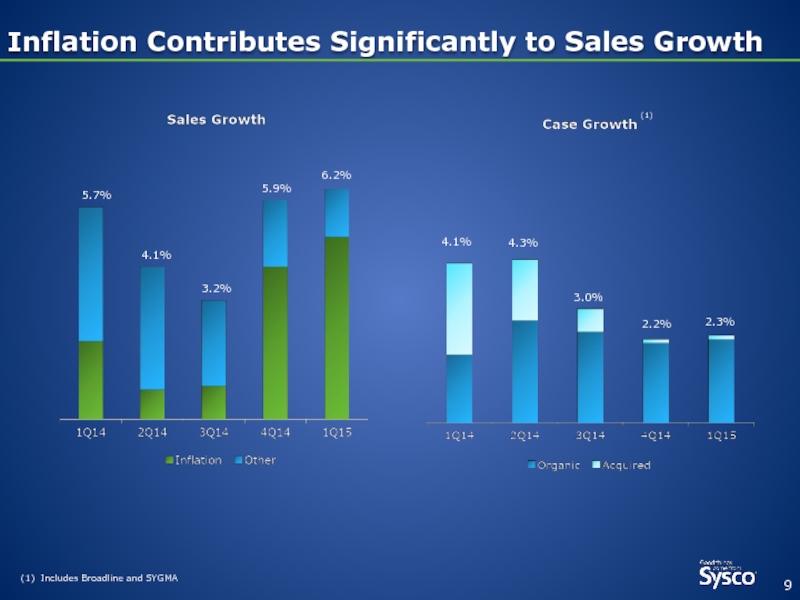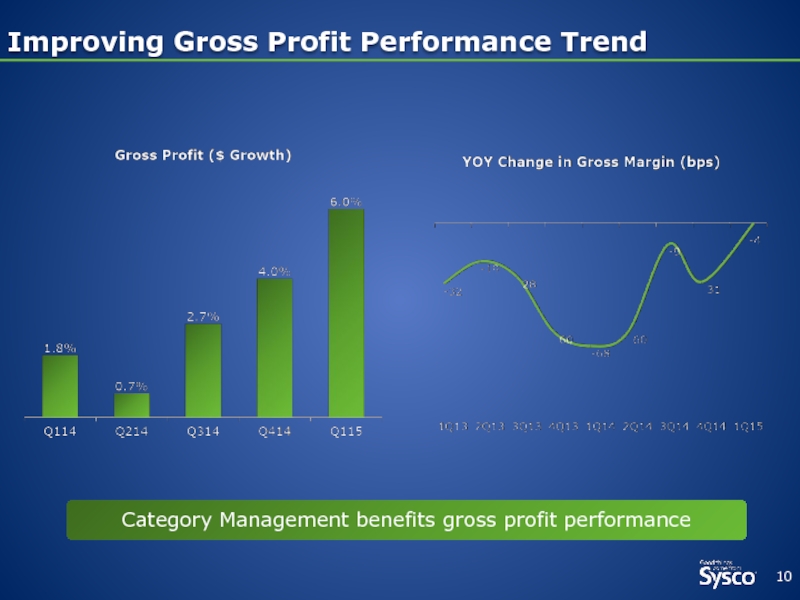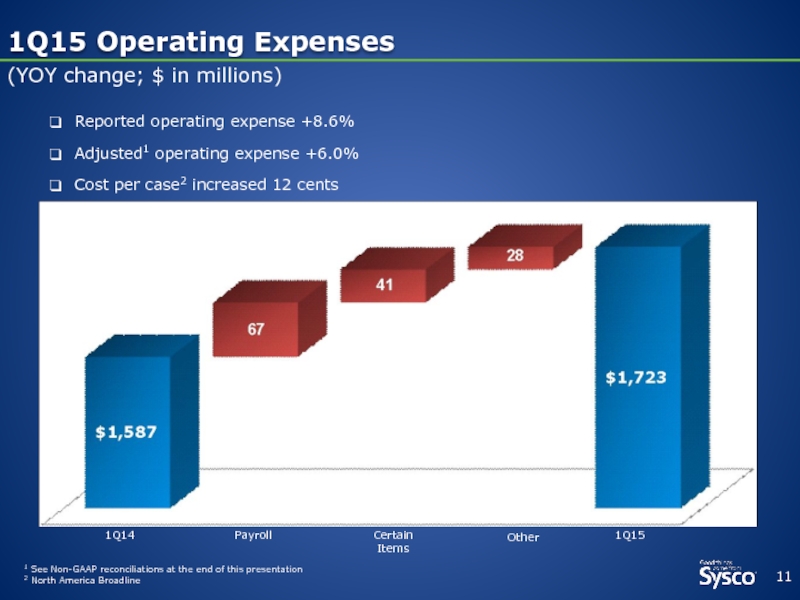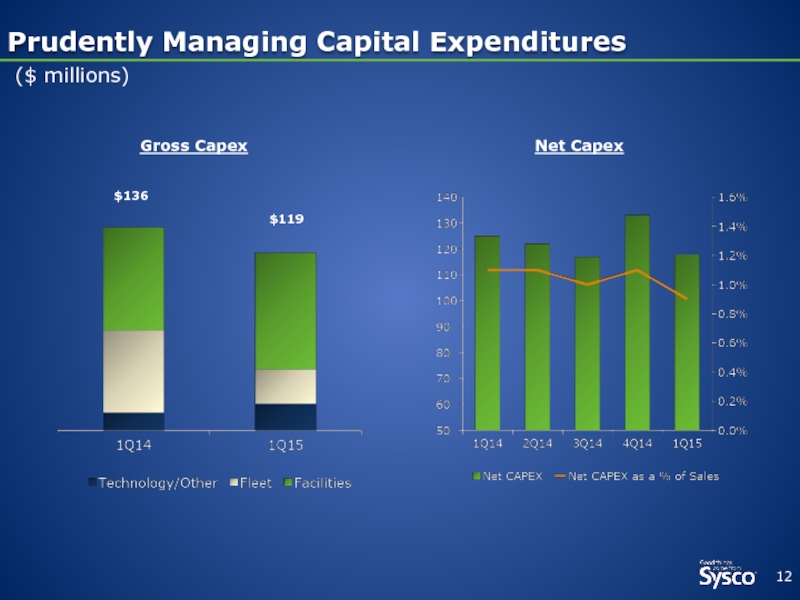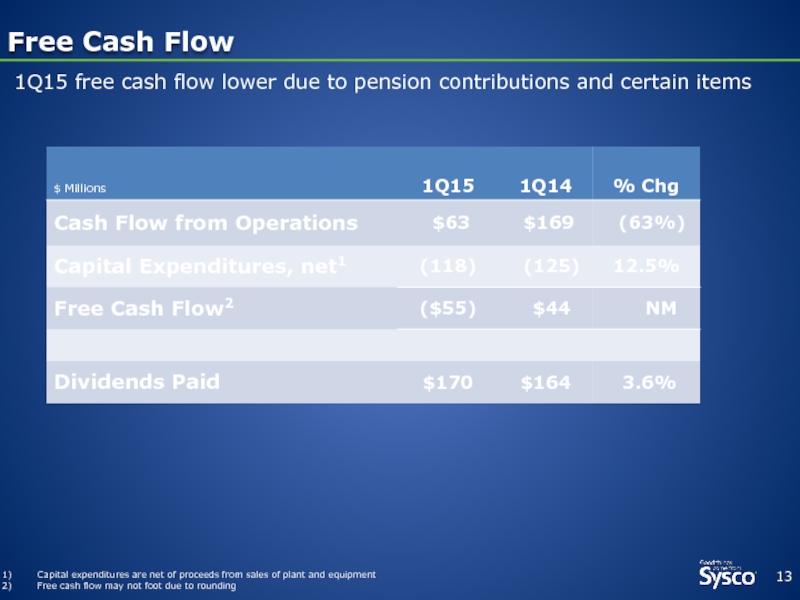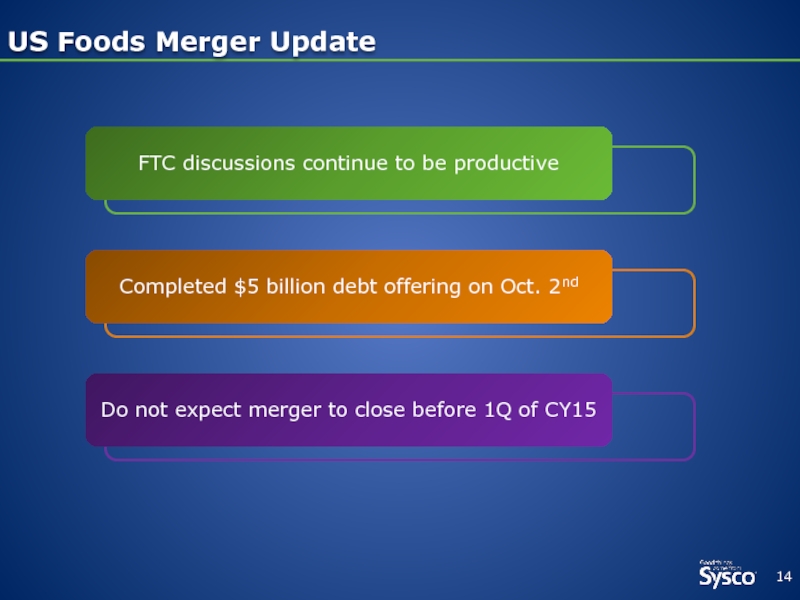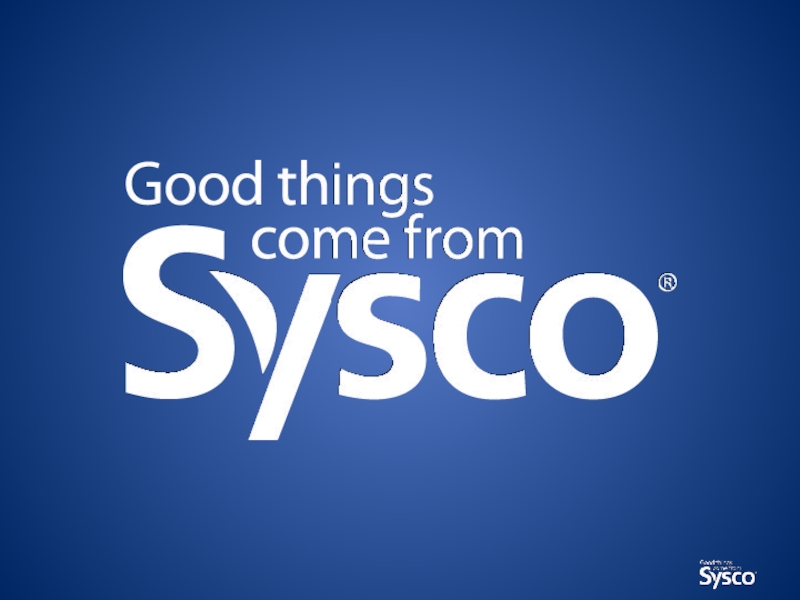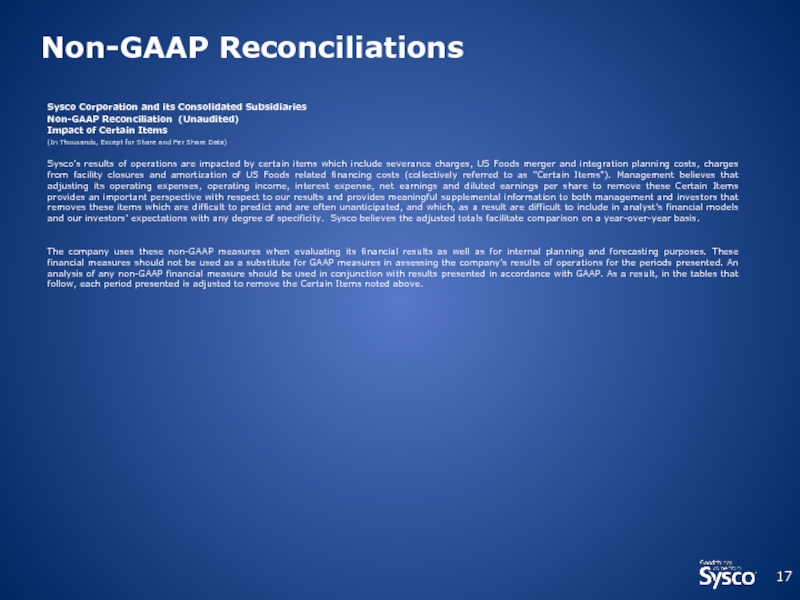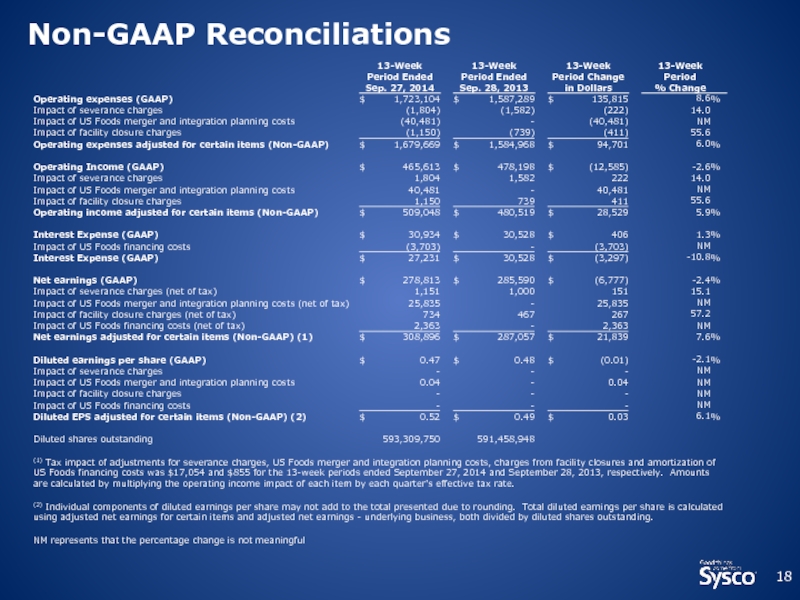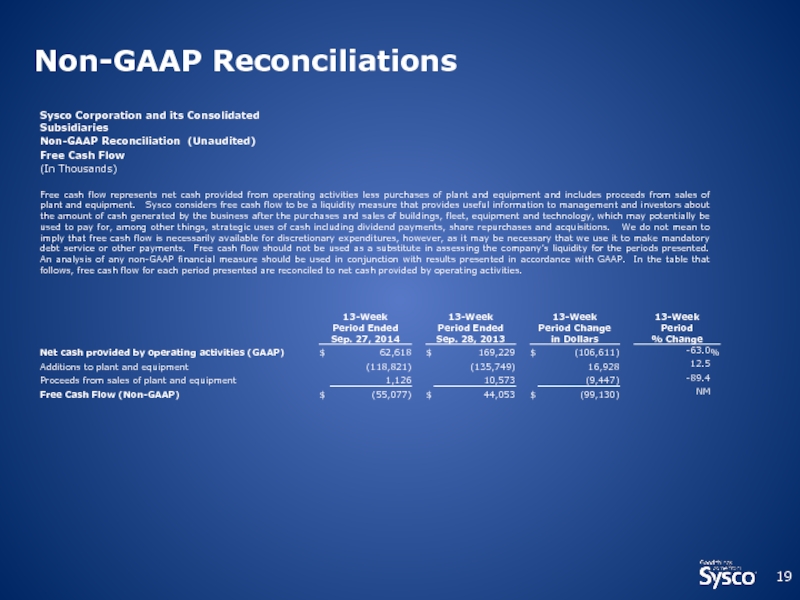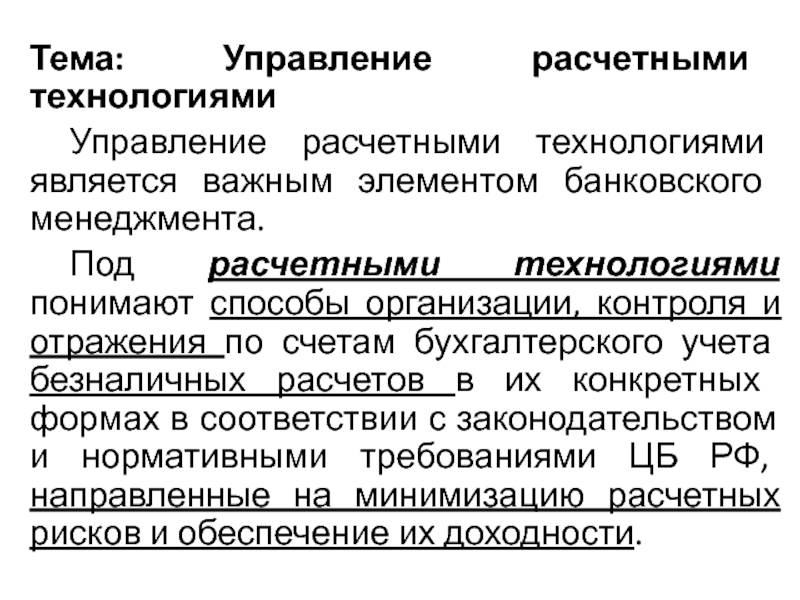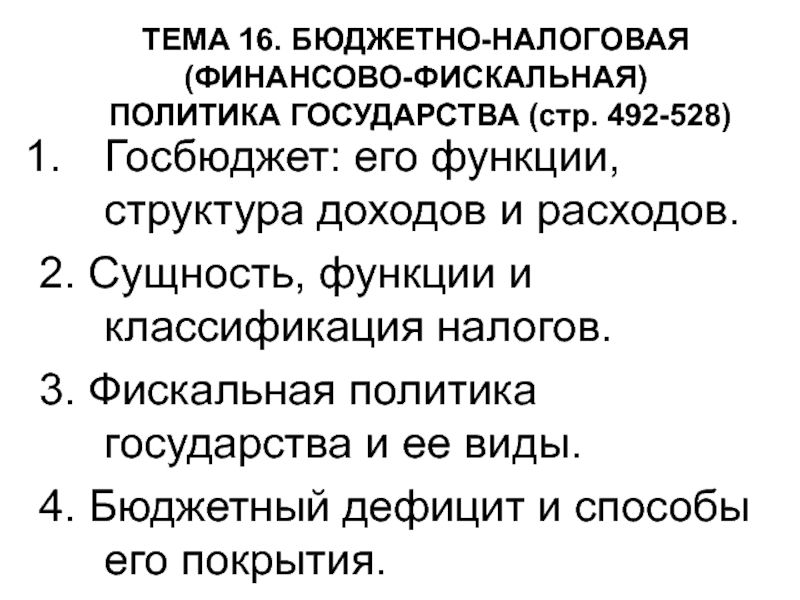- Главная
- Разное
- Дизайн
- Бизнес и предпринимательство
- Аналитика
- Образование
- Развлечения
- Красота и здоровье
- Финансы
- Государство
- Путешествия
- Спорт
- Недвижимость
- Армия
- Графика
- Культурология
- Еда и кулинария
- Лингвистика
- Английский язык
- Астрономия
- Алгебра
- Биология
- География
- Детские презентации
- Информатика
- История
- Литература
- Маркетинг
- Математика
- Медицина
- Менеджмент
- Музыка
- МХК
- Немецкий язык
- ОБЖ
- Обществознание
- Окружающий мир
- Педагогика
- Русский язык
- Технология
- Физика
- Философия
- Химия
- Шаблоны, картинки для презентаций
- Экология
- Экономика
- Юриспруденция
Sysco 1Q15 Earnings Results презентация
Содержание
- 1. Sysco 1Q15 Earnings Results
- 2. Forward-Looking Statements Statements made in this
- 3. 1Q15 Highlights 1 See Non-GAAP reconciliations at the end of this presentation.
- 4. Inflation Contributes to Increased Sales; Restaurant Traffic
- 5. Business Transformation Progress Lower Product Costs Remainder
- 6. Branding and sales initiative tailored to
- 7. We are pleased with our solid operating
- 8. 1Q15 Highlights 1 See Non-GAAP reconciliations at the end of this presentation.
- 9. 4.3% Inflation Contributes Significantly to Sales Growth
- 10. Improving Gross Profit Performance Trend Category Management benefits gross profit performance
- 11. 1Q15 Operating Expenses (YOY change; $ in
- 12. Prudently Managing Capital Expenditures ($ millions) $119 $136 Gross Capex Net Capex
- 13. Free Cash Flow Capital expenditures are
- 14. US Foods Merger Update FTC discussions
- 16. Non-GAAP Reconciliations
- 17. Non-GAAP Reconciliations
- 18. Non-GAAP Reconciliations
- 19. Non-GAAP Reconciliations
Слайд 2
Forward-Looking Statements
Statements made in this presentation, the earnings press release or
Additional Information for USF Stockholders
In connection with the proposed transaction, Sysco filed with the Securities and Exchange Commission (“SEC”), and the SEC declared effective on August 8, 2014, a Registration Statement on Form S-4 that includes a consent solicitation statement of USF that also constitutes a prospectus of Sysco. STOCKHOLDERS OF USF ARE URGED TO READ THE CONSENT SOLICITATION STATEMENT/PROSPECTUS CONTAINED IN THE REGISTRATION STATEMENT AND OTHER RELEVANT MATERIALS FILED WITH THE SEC CAREFULLY AND IN THEIR ENTIRETY, BECAUSE THESE MATERIALS CONTAIN IMPORTANT INFORMATION. The consent solicitation statement/prospectus, Registration Statement and other relevant materials, including any documents incorporated by reference therein, may be obtained free of charge at the SEC’s website at www.sec.gov or for free from Sysco at www.sysco.com/investors or by emailing investor_relations@corp.sysco.com. You may also read and copy any reports, statements and other information filed by Sysco with the SEC at the SEC public reference room at 100 F Street N.E., Room 1580, Washington, D.C. 20549. Please call the SEC at (800) 732-0330 or visit the SEC’s website for further information on its public reference room.
This document shall not constitute an offer to sell or the solicitation of an offer to buy any securities, nor shall there be any sale of securities in any jurisdiction in which such offer, solicitation or sale would be unlawful prior to the registration or qualification under the securities laws of any such jurisdiction. No offering of securities shall be made except by means of a prospectus meeting the requirements of Section 10 of the Securities Act of 1933, as amended.
Слайд 4Inflation Contributes to Increased Sales; Restaurant Traffic Remains Stagnant
Restaurant Spend
Restaurant Traffic
Restaurant
% Change vs. Year Ago
U.S. Retail Data(2)
% Change vs. Year Ago
1) Source: NPD Crest
2) Source: U.S. Dept. of Commerce
Слайд 5Business Transformation Progress
Lower Product Costs
Remainder of categories to be launched into
Year-over-year benefits begin to moderate in 4Q15
Lower Cost Structure
Continued application of best practices
Implementing tools to manage labor and expenses more effectively
Technology
Successful execution SAP software upgrade
Continued focus on post-merger integration planning and sequencing
We continue to expect to exceed our goal of $550-650 million in benefits
Слайд 6
Branding and sales initiative tailored to increase market share in Manhattan
Key
Urban Markets
Ongoing listening initiative aimed at identifying opportunities to drive enhanced customer satisfaction
Customers 1st
Demographic Markets
Program targeted at authentically serving targeted demographic markets
Revenue Management
Sales and margin management training initiative
Investments aimed at driving profitable sales growth
Слайд 7We are pleased with our solid operating performance in 1Q15
Business environment
We are encouraged by our progress in implementing our portfolio of business transformation initiatives
We have many opportunities to continue to enhance our customers’ experience, strengthen our operating performance and increase profitability
Key Takeaways
Слайд 94.3%
Inflation Contributes Significantly to Sales Growth
(1)
(1) Includes Broadline and SYGMA
5.7%
4.1%
4.1%
3.0%
3.2%
5.9%
2.2%
6.2%
2.3%
Слайд 10Improving Gross Profit Performance Trend
Category Management benefits gross profit performance
Слайд 111Q15 Operating Expenses
(YOY change; $ in millions)
1 See Non-GAAP reconciliations at
2 North America Broadline
Reported operating expense +8.6%
Adjusted1 operating expense +6.0%
Cost per case2 increased 12 cents
Other
1Q15
1Q14
Certain Items
Payroll
Слайд 13Free Cash Flow
Capital expenditures are net of proceeds from sales
Free cash flow may not foot due to rounding
1Q15 free cash flow lower due to pension contributions and certain items
Слайд 14
US Foods Merger Update
FTC discussions continue to be productive
Completed $5 billion
Do not expect merger to close before 1Q of CY15
